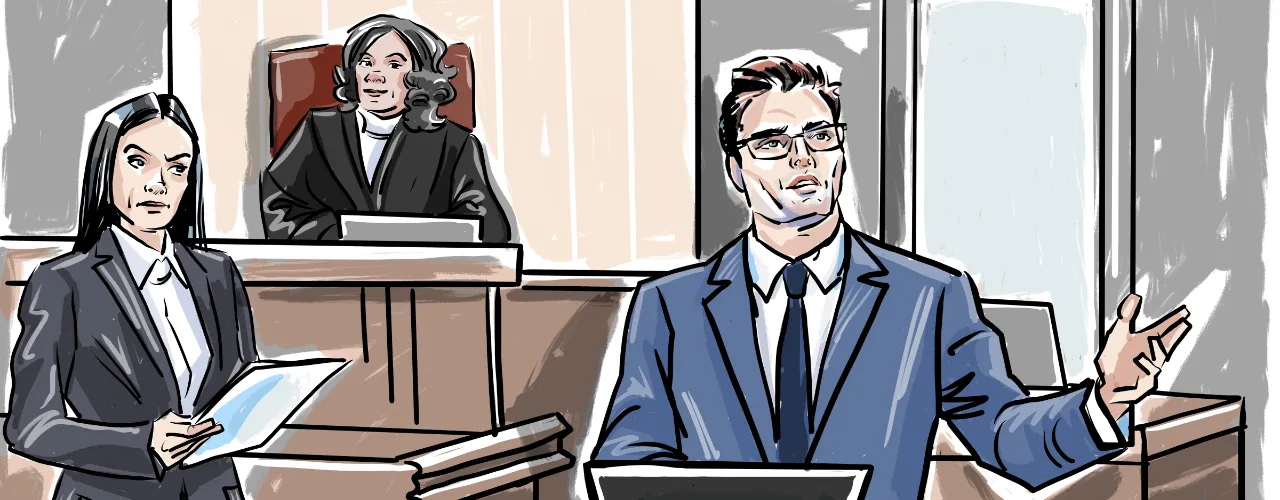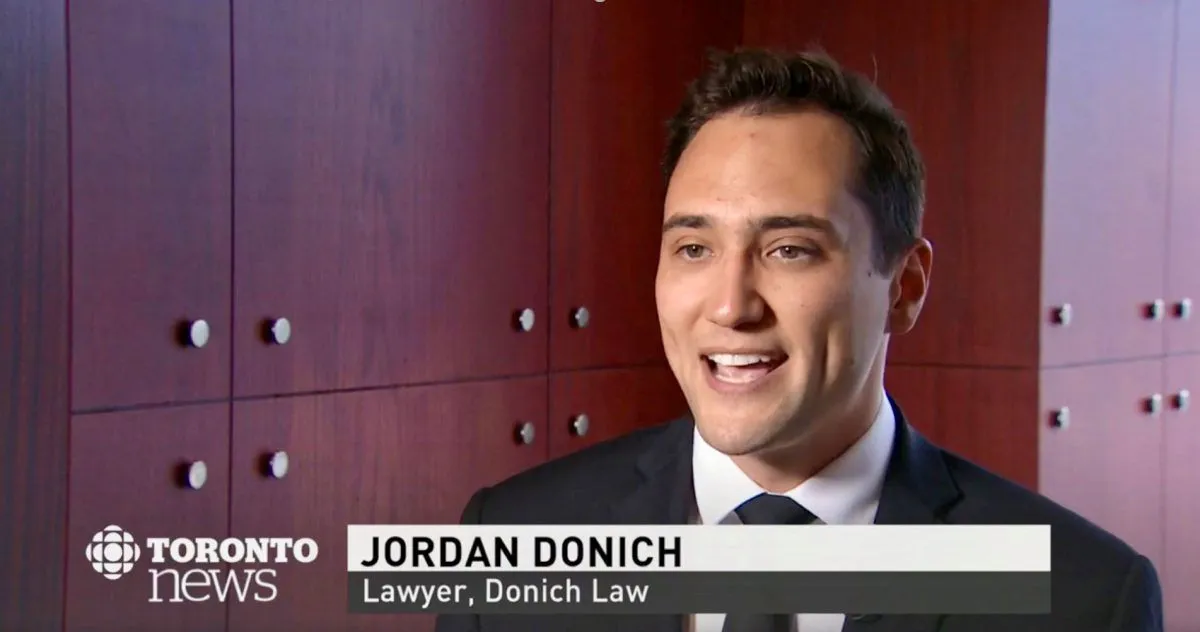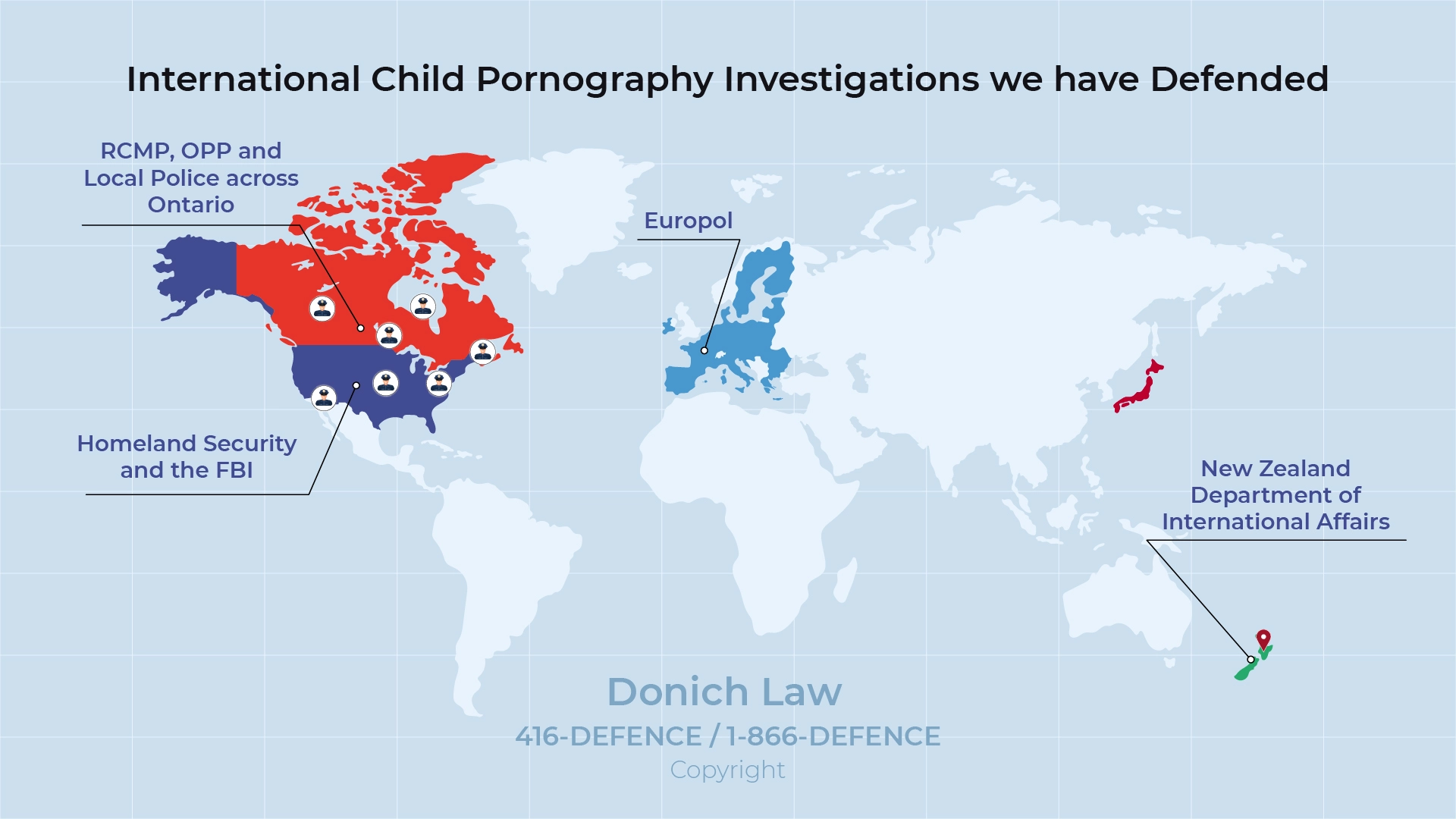
Defend Child Pornography Charges
Crime Statistics
Child pornography offences are serious sex crimes in Canada. Between 2014 and 2020, there were 10,379 cases of online sexual offences against children, and 29,028 incidents where the victim could not be identified. Child sexual offences committed online were more likely to be found guilty with up to 61% of cases resulting in a guilty conviction. There were 11,790 cases of child pornography cases discovered in 2021.
Our Experience
Donich Law has over a decade of experience defending internet child exploitation offences across Ontario. We have defeated a number of complex, forensically technical cases by developing skills in computer forensics. We employ our own forensic experts to carefully analyse the data taken from electronic devices seized from clients in police investigations. The Firm has attended the Internet Child Exploitation Headquarters and been trained on their software. This provides the Firm with a unique skill set suited to defend child pornography and other sexual internet offences involving children.
In the case of R. v. T.T. [2022], the Firm litigated a case involving an individual charged with a total of nine internet child exploitation offences including various child pornography offences and child luring. The individual was arrested after engaging with users online, trading child pornography material. The Firm defeated seven of the nine charges. On sentencing for the remaining two charges the court considered various mitigating and aggravating factors. The Firm advanced several important mitigating factors including that the accused was a first-time offender with no previous history of negative interactions with law enforcement. The Court considered these factors, sentencing the accused to one of the lowest possible sentences, taking into consideration the applicable mandatory minimum penalties for child pornography offences.
Child pornography cases are time consuming to defend given the strong public interest in their prosecution. The Crown will often accelerate their prosecution to avoid losing them with associated court backlogs or 11b Charter delays. It’s important to build the record early if the defence is to be successful with a Charter argument. In the Firm’s R. v. A.B. [2020], the Crown temporarily lost key disclosure. The Defence was able to build a record and establish the Crown caused significant delay which resulted in a withdrawal of making child pornography, distribution of child pornography and voyeurism.

- Toronto Star: Pornhub and Revenge Porn.
- Toronto Star: New Corporate Liability for Child Pornography in Canada.
- Toronto Star: Police Power and Social Media Companies.
- Global News: Can an airline tell you to stop recording and delete a cellphone video?
- Métro Montréal: Avec le temps chaud, il n’y a pas que le mercure qui grimpe: le nombre de cas de voyeurisme aussi.
- CityNews: As the temperatures outside get warmer, police say the reported number of cases of voyeurism tend to rise.
- VICE News: An Image Site is Victimizing Women and Little Can be Done.


Child pornography law enforcement units have been set up across the province. These specialized teams are known as Internet Child Exploitation (ICE) units. The population of Orangeville is much smaller than other cities in the GTA, so it becomes difficult to determine the exact local prevalence of the offence. More data is available in larger cities across Canada.
In the city of Orangeville, online child exploitation, child pornography and child luring are investigated by the Ontario Provincial Police’s Internet Child exploitation unit. For smaller jurisdictions in Ontario, the Ontario Provincial Police are often in charge of policing the area. The Ontario Provincial Police often cooperates with the Nation Child Exploitation Crime Centre (NCECC) of the Royal Canadian Mounted Police (RCMP) to find online child sexual abuse material and those who access, possess or distribute it.
Internet Child Exploitation is a Global Problem

In the case of R. v. E.G. [2014], the Firm defended an individual arrested in one of the largest child pornography busts in Ontario history. In total police seized more than half a million images and 600 videos of child sexual exploitation and abuse. As is common in child pornography cases, the accused was unaware he was being investigated until police attended his residence with a search warrant. His home was searched, electronic devices seized, and charges were laid. The Firm engaged in a separate analysis of the material seized, obtaining a copy of the data taken from the accused’s electronic devices, using this information to defend the accused.
Online Sex Offence are on the Rise in Canada
When defending allegations of child pornography, it is important to review the alleged child sexual abuse material. This can be done by attending the police station to access the material in a controlled environment. In some circumstances, counsel for the accused can obtain a forensic copy of the disclosure for independent analysis. The Firm was able to successfully withdraw all child pornography charges in its R. v. M.O. [2021], by proving the alleged child pornography was deleted and that the material in question did not meet the legal definition.
The police will not provide metadata to the accused as part of disclosure. So, it is important to obtain a forensic copy if this is relevant to a potential defence such as hacking or unintentional download. The metadata will yield details about the time the file was downloaded, whether it was deleted and when it was accessed.
Law Newbie is a free AI research assistant that can help you safely answer questions about criminal law.




Frequently Asked Questions
How Are Foreign Law Enforcement Involved in These Types of Cases?
Due to the seriousness of the offence, many countries around the world have laws against child pornography. Cybercrime has become more and more prevalent along with the advancement of technology. As child pornography has become more accessible through the internet, governments and law enforcement have collaborated globally to control the spread of child sexual exploitative material. Child pornography is often traded internationally over the internet, and many children that are exploited may come from various different countries.
Operation H was the largest online child exploitation operation launched by New Zealand’s Te Tari Taiwhenua Department of Internal Affairs (DIA). In 2019, New Zealand’s Digital Child Exploitation Team notified the Royal Canadian Mounted Police’s National Child Exploitation Crime Centre (RCMP NCECC) of a website containing child sexual exploitative material. Collaborating with the NZ DIA and the International Child Exploitation (ICE) units, the RCMP was able to arrest 47 Canadians and save 12 children from abusive situations. This operation showed that child pornography is often an international cybercrime. To combat child pornography, when foreign law enforcement discovers activity interacting with child pornography outside of their jurisdiction, they may relay the information to the local authorities. The local police then have the authority to investigate.
What If I Accidentally Received Child Pornography in Orangeville?
Accessing child pornography is enumerated in the Criminal Code, section 163.1(4.1) states that to access child pornography, a person must knowingly or knowingly cause child pornography to be viewed by, or transmitted to themselves. The language in the section is very specific.
Possession in the law is defined in section 163.1(4) of the Criminal Code. A person possesses child pornography when they knowingly have child pornography material. For example, if child pornography is linked to an innocent file, and the person downloading the file has no knowledge of such a thing, and only intended to download the innocent file for an innocent purpose, they did not possess child pornography.
If a person accidentally receives child pornography, the best thing to do is to delete the material immediately and not to keep it. The person accessing child pornography is put at risk to be charged with accessing child pornography. If law enforcement somehow discovers that there is transmission of child pornography and the accused is arrested, the accused must go to trial. Under the law, everyone is presumed innocent until proven guilty—a charge, however, must be disproven. If the Crown can prove that the accused had the material in their possession, or accessed it, the accused must show that they did not do so intentionally. It must be proven that the material was sent accidentally. Factors such as the number of files, the number of transactions, in addition to deleting the material immediately may increase the chances of such a defence being successful.
Do the Quantity of Files Matter in Orangeville?
Yes, the quantity of files does matter. The amount of files can be an aggravating or mitigating factor. The Kienapple principle is the rule against multiple convictions. It prevents multiple charges and convictions for a single criminal act. Therefore, possession of multiple files will only amount to one count of possession of child pornography.
In the Ontario Court of Appeals case of R. v. Inksetter, [2018] ONCA 474, the respondent pled guilty to possession of child pornography and making available child pornography. The respondent had one of the largest and worst collections of child sexual abuse material. The police were able to identify 28,052 unique images and 1,144 unique videos from over 1.2 million images and over 40,000 videos before halting their investigation. The respondent also shared these files to others. The trial judge noted that the amount The Court of Appeal, understanding the primary sentencing principle to be denunciation and deterrence, also took in mind the rehabilitation principle. The Court sentenced the respondent to three years in prison for possession of child pornography, and three and a half years for making available child pornography.
Does the Type of Child Pornography Offence Charges Matter?
The type of child pornography offence matters. In total, there are four different offences related to child pornography.
Accessing child pornography means that the person knowingly caused child pornography to be viewed by or transmitted to themselves. This meant that the intention to perform the crime mattered, and without the intent of “knowingly” viewing pornography, the person cannot be convicted. If convicted, the mandatory minimum sentence is six months incarceration. Should there be any aggravating factors, the Court may increase the sentence to a maximum of two years less a day if the Crown proceeds summarily. If the offence is prosecuted by indictment, the maximum penalty is ten years’ incarceration.
Possession of child pornography means that the person knowingly held child pornography in their possession. Without the intention or knowledge of the crime, the person cannot be convicted. For example, if someone did not know child pornography was in their possession, that could be a possible defence in a case. If convicted, the mandatory minimum sentence is six months incarceration. Given aggravating factors, the Court may increase the sentence to a maximum of two years less a day on summary conviction. If the Crown elected by indictment, the maximum penalty is ten years.
The sentencing for making and distributing child pornography are the same. A person knowingly makes child pornography when they create material that is centred around child sexual abuse. The distribution of such a material means that the person was knowingly sharing and making available such content to other people. The mandatory minimum for both is one year. The maximum penalty for making and distributing child pornography is 14 years. Both offences are straight indictable.
What If the Offender Never Touched a Child?
Child pornography is often misconstrued as a “victimless crime” because the offender in most cases have never actually touched a child. If they have touched a child, they will likely be charged with sexual assault, sexual interference or some other sexual offence in addition to the child pornography charges. The Supreme Court of Canada in R. v. Friesen, [2020] SCC 9, recognized the degree of harm in which child-related sexual offences can have to the victims and society at large. In their decision, the Court sought to send a strong message of denunciation and deterrence of these crimes.
Child pornography is not a victimless crime. There exists a market for child pornography, and by accessing or possessing child pornography, the offender encourages more offences to be committed. In addition, the making of child pornography almost always involves child sexual exploitation or the promotion of child sexual abuse material. Each time the material is shared, the child is victimized again, and their victimization is used for other people’s enjoyment.
Recent Cases
R. v Noonan, 2023 ONSC 3351
In the Ontario Superior Court of Justice case of R. v. Noonan, the offender pled guilty to eleven counts. Convictions were made for child luring, accessing child pornography, possessing child pornography, and distributing child pornography. After receiving a tip of online child pornography activity, the London Police Service found the offender with child pornography on his phone. The device contained 88 videos meeting the definition of child pornography, along with several images featuring the same material.
In their sentencing decision, the Court considered several mitigating factors: the defendant’s guilty plea, the first-time offence, remorse, prospect of rehabilitation, family support, and the efforts in self-funded counselling that the offender has participated in. The collection of child pornography was deemed to be mid-range in size, but the young age of the children along with the number of victims of the crime was deemed to be an aggravating factor. The Court also considered the severe offence of child luring. Included in the evidence were conversations the offender had with a thirteen-year-old victim he was luring. The Court placed denunciation and deterrence as the primary sentencing principle above rehabilitation and determined the final sentence to be three years. The ancillary orders of a DNA sample, a SOIRA registration, along with a section 161(1)prohibition was entered.
R. v. Sowell, 2023 ONCA 398
In the Ontario Court of Appeals case of R. v. Sowell, the appellant sought to appeal a trial judge’s indeterminate sentence. The appellant pled guilty to sexual interference, child luring, making, and possessing child pornography, as well as failing to comply with a bail condition in 2008. Three victims were identified, and thousands of images and videos of child pornography was discovered. The appellant had a history of breaching his statutory orders, was discovered attempting to lure children once more in 2016 and was designated a dangerous offender.
The sentencing judge determined that the offender was too dangerous for rehabilitation in the community. The assessment by the psychiatrists recognizing the appellant’s behaviour to be pedophilic disorder, the breach of multiple ancillary orders, as well as the offender’s criminal history and pattern of repetitive behaviour resulted in an indeterminate sentence. The trial judge felt that an indeterminate sentence was necessary to protect the public.
The defence appealed, noting that one psychiatrist was optimistic enough to believe in the appellant’s rehabilitation, given optimal treatment including sex drive reducing medication. However, the trial judge was not satisfied that this would sufficiently protect potential victims, and the Court of Appeals agreed. The appeal was dismissed, and the indeterminate sentence remained.
R. v. West, 2023 ONSC 709
In the Ontario Superior Court of Justice case of R. v. West, the appellant was convicted of two counts of possession of child pornography and one count of child luring. The appellant had attempted to establish a relationship with the complainant, who was underage at the time. The complainant had lied to the appellant about her age, as she was a minor at the time while the appellant was an adult. When the underage relationship was discovered and the police obtained a search warrant, they discovered child pornography of the underage relationship in addition to child pornography of other victims.
The appellant raised the appeal that his section 8 Charter rights were violated. The section 8 of the Charter guarantees security against unreasonable search and seizure. The appellant argued that as the primary modes of communication he had with the complainant was through mobile apps, the police had no right to search his computer. The Court of Appeals agreed with the Crown that the police did have reasonable grounds to search the computer; some mobile applications were computer-compatible, and the banking records they wished to access were on the computer as well. The Court found that the appellant did not take enough reasonable steps to ensure the complainant was not underage. And thus, the images and videos he received of the complainant constituted as child pornography. The appellant was sentenced to 18 months in custody followed by a two-year probation.













